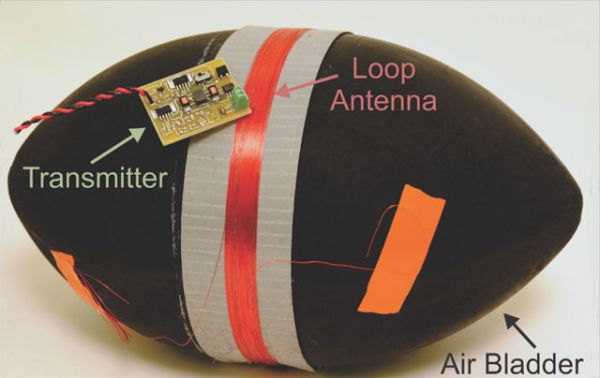Official NFL footballs are crafted by hand by a company in Chicago called Wilson Sporting Goods. The footballs that are made there typically range from 11 to 11.5 inches in length and weigh anywhere between 14 and 15 ounces on average. Originally, animal bladders lined the outside, occasionally from the inside of a pig, giving the traditional American football the long-standing nickname of a “pigskin.” Now a days, they consist of cowhide leather or vulcanized rubber with laces that are stitched to the top adding mass. This causes the oblong spheres to be naturally lopsided. This is fixed by inserting extra weight to the opposite side of the football balancing it out. Knowing this, a clever hacker will realize that the balancing spot is a perfect place to subtly add a motion tracking transmitter like this one. Doing so makes it possible to the track not only the position of the ball on the field, but its precise location in 3D space!
Since each football is unique, variations between one ball to another exist. This means that embedding a circuit into a football only modifies the equipment slightly, which is a good thing because sports fanatics tend to be very opinionated about whether or not technology should influence the game. So long as the transmitter and loop antenna added to the air bladder doesn’t pass that threshold of about an ounce (or so) difference in weight, then the football itself really isn’t affected much.

















